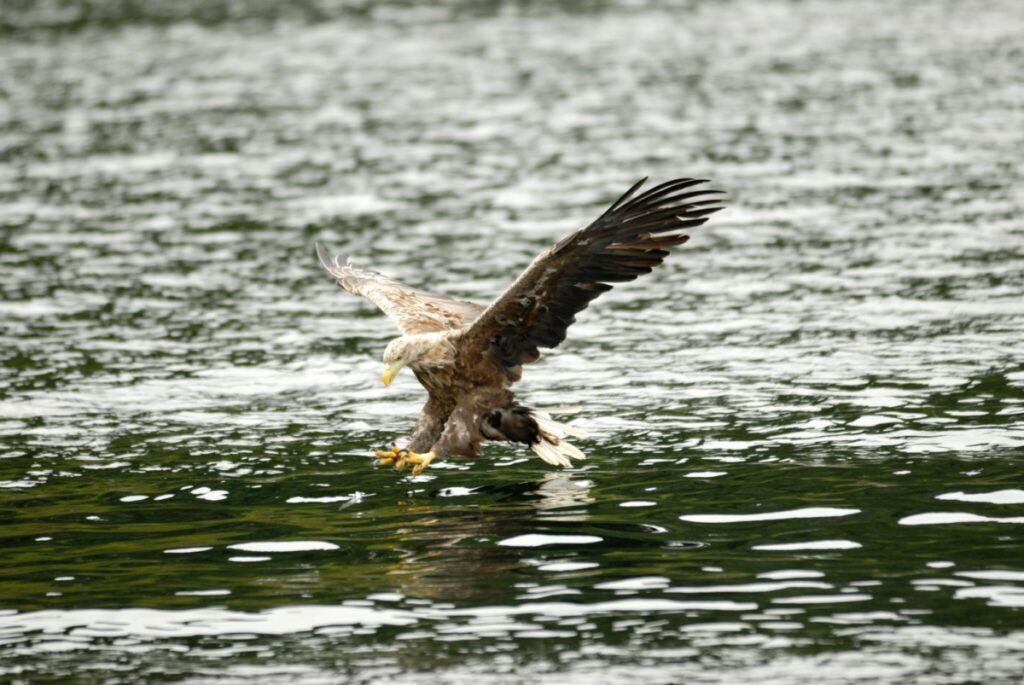SCOTTISH birds of prey’s breeding success may have been impacted by avian flu, according to a report published by NatureScot today.
The widespread effects of the virus on seabirds and wildfowl in Scotland and throughout the U.K. have been well documented, but the effect on birds of prey is less well known.
A new analysis by the British Trust for Ornithology (BTO) found that the proportion of golden eagle pairs successfully rearing young declined from 48% in 2021 to 28%.
During the same period, breeding success for white-tailed eagles dropped from 67% to 45%.
White-tailed eagles appear to have been most severely impacted in coastal areas, suggesting a link between infected seabirds that eagles may have scavenged.

The largest declines recorded were in Lewis and Harris, where breeding success of golden eagles fell from 55% to 16%, and for white-tailed eagles declined from 66% to 24%.
The first cases of avian flu in birds of prey were detected in November 2021, and by April 2022, there were positive test results for a range of species.
The study found evidence for regional impacts on some species, such as lower breeding success for ravens in Orkney and Shetland, and for peregrines in Tayside.
However, these impacts appear to be more localised than for eagles.
Other factors such as weather and prey availability can affect breeding success in birds of prey, leading to lower brood sizes or fewer chicks fledging from breeding attempts.
However the 2022 data showed that complete nest failures (with no surviving young) were more frequent than partial successes.
This is consistent with the effect of a highly contagious and pathogenic disease such as avian flu.
John Allan, NatureScot Ornithology Advisor, said: “Scotland still has strong eagle populations but these findings are very concerning.
“So far we have had fewer positive test results among birds of prey this year than last year, but it is early in the season and we can’t be complacent.
“We intend to repeat this analysis in 2023 to see if breeding success begins to improve.
“All partners in Scotland’s Avian Flu Task Force are continuing to work hard to understand this virus and take action to make our wild bird populations more resilient.”
Acting Head of Science for BTO Scotland Mark Wilson said: “We know from laboratory tests for the virus in dead birds of prey that avian flu can kill both adult and nestling raptors.
“However, testing of live and dead chicks is too infrequent to be certain about how widespread this disease was among raptors in 2022, or how many of last year’s breeding failures were caused by avian flu.
“Nevertheless, the findings of this study are consistent with worrying impacts on Scottish eagle populations.

